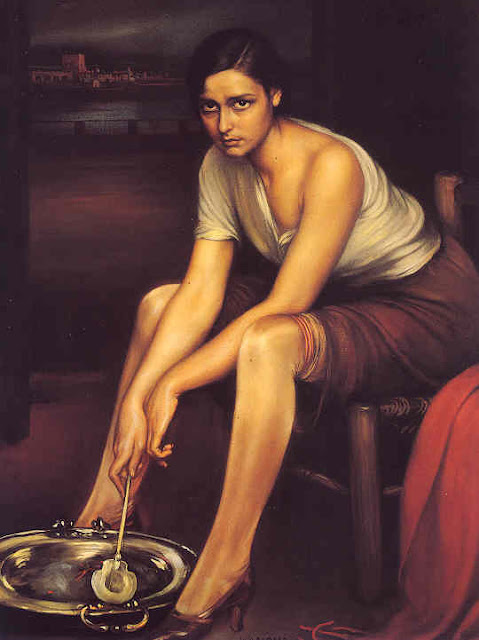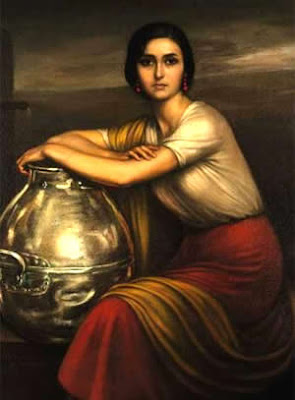Julio Romero de Torres was born in Cordoba on November 9, 1874. He was the son of Rafael Romero Barros, painter and founding director of the Museo de Bellas Artes de Cordoba the Provincial Museum. With his father as only teacher, he began painting at age 10. His two other brothers, Rafael, who died young, and Henry, who was awarded with the Bronze Medal at Nationals, 1901 and 1904, became a prominent art critic and historian and was also trained by his father.
It has been said that he was the painter of the soul of Andalusia, it is the best example of Andalucian artist. His paintings showed a human reality so beloved as the female figure, well rooted in the secular tradition of his race, his paintings reflect an atmosphere of romance and legend, tragic or sentimental feelings of an idealized Córdoba.
Young Julio Romero would be introduced to painting when Spain was under very opposite influences: Romanticism, Impressionism, Realism and Modernism. Therefore, before getting the personal artistic expression that gave him his deserved fame, he went through many different styles from most of previous trends.
Romero de Torres worked as a teacher at the School of Fine Arts of Cordoba and received many awards and recognitions in many countries in the world. He travelled to Morocco and Tunisia and some European countries, such as: Italy, France, Great Britain and Netherlands.
The young painter lived intensely cultural life of the late Cordoba XIX. He was introduced in various settings of the Madrid of the early years of the XX century. Among them, of course, the world of song and spectacles of bullfighting.
In 1914 European war broke out and the name of Julio Romero de Torres jumps into the forefront of that year, leading a manifesto, along with a select group of intellectuals who wanted to protect spiritual values and he adhered to the Allied war cause.
He was a good man, sensitive, quiet, discreet, clear and certain in his judgments. He read a lot, he especially liked the Russian realist novel (Tolstoy and Dovstoievsky), played the guitar well and loved the theater. Above all he was simple, he never sought praise. One curiosity about him is that thanks to him the Cordobes hat (a wide-brimmed hat) became very famous, he used to wear a cape and this kind of hat.
In the early months of 1930, Julio Romero de Torres, exhausted by overwork, and suffering from a liver disease, is in his native Cordoba trying to recover. Tired, and moreover, seeing his friends disappear affected very much. But he still paints in his studio and between the months of January and February he would paint his final and brilliant work "The little piconera." On May 10, 1930 Julio Romero de Torres died at his home in Cordoba which shook the entire city of Cordoba, whose people took to the streets at his funeral due, to the great admiration he had harvested from his countrymen, even from the most humble working classes to the upper aristocracy of Cordoba, it made very clear the immense popularity he got to enjoy during his life.
And now I leave you some of his paintings. I hope you enjoy them!
Source:
ecured.es
usuarios.multimania
identidadandaluza.wordpress.com











What beautiful pictures and a great informative post. Thank you.
ReplyDeleteThanks for coming and for your kind comment cscobirds2. I am very pleased you have enjoyed the post, these comments encourage me to keep on posting! Warm regards,
ReplyDeleteI remember that painting of the Andalusian dark haired woman of painter from the day i see it. Every time i see the painting very strong beautiful feelings appear, power of the eastern culture reflects, the strong and inocent and passionate look of the woman affects me. Muchas gracias por compartirlo.
ReplyDelete